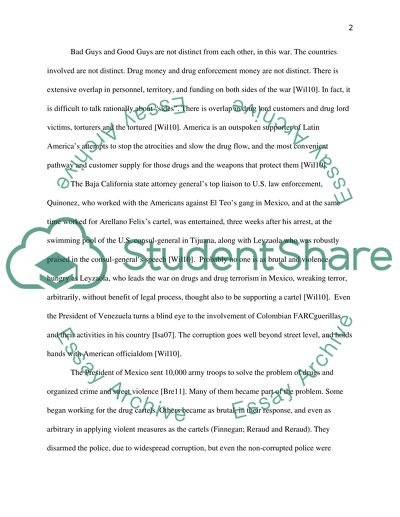Cite this document
(“Corruption, Poverty, Hopelessness, Violance: The Drug War in Latin Essay”, n.d.)
Corruption, Poverty, Hopelessness, Violance: The Drug War in Latin Essay. Retrieved from https://studentshare.org/sociology/1440332-illustrate-the-corrupting-effects-of-drug-gangs-in
Corruption, Poverty, Hopelessness, Violance: The Drug War in Latin Essay. Retrieved from https://studentshare.org/sociology/1440332-illustrate-the-corrupting-effects-of-drug-gangs-in
(Corruption, Poverty, Hopelessness, Violance: The Drug War in Latin Essay)
Corruption, Poverty, Hopelessness, Violance: The Drug War in Latin Essay. https://studentshare.org/sociology/1440332-illustrate-the-corrupting-effects-of-drug-gangs-in.
Corruption, Poverty, Hopelessness, Violance: The Drug War in Latin Essay. https://studentshare.org/sociology/1440332-illustrate-the-corrupting-effects-of-drug-gangs-in.
“Corruption, Poverty, Hopelessness, Violance: The Drug War in Latin Essay”, n.d. https://studentshare.org/sociology/1440332-illustrate-the-corrupting-effects-of-drug-gangs-in.


